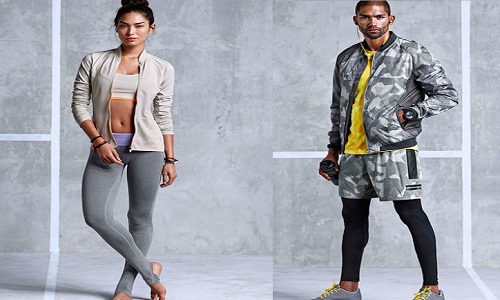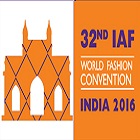FW
American clothing company PVH Corp. that owns brands like Tommy Hilfiger, Calvin Klein, IZOD, Arrow, and licenses labels such as Geoffrey Beene, BCBG Max Azria, Chaps, Sean John, and more, has released its eighth annual Corporate Responsibility (CR) report. It features an enhanced global CR strategy to address social and environmental issues affecting PVH the most and an update on the progress on its 2015 initiatives.
The company’s CR program is structured with 10 commitments across three key focus areas: empowering people; preserving the environment; and supporting communities. The strategies cover issues such as building safety, chemical management, greenhouse gases, inclusion and diversity, and supporting the needs of women and children, as mentioned in UN’s 17 Sustainable Development Goals.
PVH’s 2015 initiatives highlighted the development of best-in-class apparel manufacturing industry in Ethiopia by global supply chain team; Tommy Hilfiger partnering with the World Wide Fund for Nature to help safeguard water resources in the Taihu and Mekong river basins; Speedo partnering with Italian yarn maker Aquafil and Chinese supplier Parawin to transform nylon factory remnants into new swimsuits. 2015 also witnessed the global launch of PVH University online to expand learning and development opportunities for the 9,000 office-based associates.

New technologies in moisture wicking and weather resistance are helping cotton overcome outdoor challenges in performance apparels. Those in the active outdoor business have been wary of traditional cotton when worn for recreation such as hiking and backpacking, as sweat could be soaked up by the absorbent fabric, keeping moisture next to the skin and giving wearers a chill. But various technologies have proved that performance cotton can repel wetness from the weather as well as wick moisture from the inside and dry faster than traditional cotton and manmade fibers like polyester.
There are several opportunities for retailers and brands that adopt cotton outdoor product. That’s because, although consumers know about active performance technologies like water repellency, thermal regulation and moisture management, research shows the percentage of consumers who have actually purchased them in the past is about half of the awareness level.

A survey shows that just 40 per cent of the population purchased cotton with water repellency, 35 per cent have bought clothes with thermal regulating properties and only 32 per cent have clothes have bought apparels made with moisture management. Researchers have gathered that consumers who bought apparel with performance technologies in the past are very satisfied (80 to 95 per cent) with their performance and twice as likely as non-purchasers to pay a premium for these added benefits. Among the many companies, Stio is looking to capitalize on cotton on performance apparel. Besides Stio, collaborations between Cotton Incorporated and several outdoor apparel companies are already in place.
Cambodia’s garment sector is expanding, though productivity is yet to see a sharp increase. Investors require certain returns on their invested capital—if they do not obtain this, they may reconsider further investments in the Cambodian garment sector. There is some scope for productivity gains, but the prospects of dramatic acceleration in productivity growth do not appear strong in the short term.
Factories that are unable to ramp up productivity will simply have to shut down. Low productivity is due mainly to poor working conditions and improvements would depend on increased investment. Also global brands have yet to significantly raise prices they pay manufacturers. The prices being paid by buyers—mostly brands in the US and Europe—have stagnated, largely because of an increase in supply from countries including Vietnam and Bangladesh.
The benefits of flat, and sometimes falling, garment prices have been enjoyed in part by consumers. In both the US and EU, the cost of apparel rose by just 5.4 per cent between 2006 and 2015. Global brands can help reduce the financial burden on factories by paying higher prices. However, Cambodia’s garment sector continued to show strong growth this year, with revenue increasing by 14.5 per cent in the first quarter.
Companies in Tamil Nadu's textile belt are opting for IPOs now. Till now they had banked on debt to run their privately held businesses. Integrated firms manufacturing goods across the supply chain from yarn to finished apparel work out of Coimbatore, Tirupur and Erode. They boast of fairly high levels of operating margins, international clients like Walmart and Macy's and strong business continuity typical of family-run businesses. But they have thus far held back their exposure to capital markets. Lack of exposure limited the way they structured their companies -it was either proprietary or limited liability partnership. Some extended it to private limited companies.
A slow-but-promising European recovery, strong domestic demand and a gradual increase in exposure to how the capital markets work appear to have pushed entrepreneurs towards the markets now. Their ways of raising funds have changed.
Globalisation has expanded their horizons to the avenue of tapping public money. In a competitive, volumes-driven business environment, a company needs to have a strong fund flow. At a time of high interest costs, capital markets are seen as a great way to access funds. And clients feel safer buying from a listed company. Over the last decade, only a handful of Tamil Nadu's textile barons have taken to Dalal Street and fared well after their IPO and sustained interest among investors.

The IAF together with the Clothing Manufacturers Association of India, is gearing up to host the 32nd IAF World Fashion Convention in Mumbai on September 27-28. The convention will be held at the Trident Hotel, Nariman Point. At hand would be an impressive cast of speakers who would present their views on cutting edge developments in the fascinating fashion industry.

IAF conventions are known for covering a broad range of strategic issues such as: sourcing, retailing, technology, denim and branding. And they are known to combine deep local insights with a true global outlook. The speakers are therefore a strong combination of the top of the Indian fashion industry and international experts. Some of the speakers lined up are: Alex Thomas, VP of VF Corporation who will share the floor with Faruque Hassan, Senior-VP, BGMEA and Fred LeMoine of Weave/TAL Hong Kong for the sourcing session.
The branding session brings together top names from Indian brands including the President for Raymond Apparel and the Indian market CEOs of Bestseller, Tommy Hilfiger and Nike. The retail session will cover the fascinating story of one of the largest and fastest growing markets for fashion in the world with Reliance, Shoppers Stop and Arvind Brands.
Finally, no future vision in the fashion industry is complete without a session on technology. And to that end, major global technology suppliers to the fashion industry like WGSN, WTiN, Alvanon and Lectra will explain how tech is changing fashion’s industry. The theme for this convention is ‘Insights into New Opportunities’.
The ongoing assessment of supply capacities for textile, apparel and leather products by the East African Community Secretariat in the East African (EAC) region must be handled with utmost care and the outcomes made to truly reflect the situation on the ground. The exercise is meant to facilitate planning for phasing-out of second-hand leather and apparels products, in line with a directive of the last EAC heads of state summit.
The 17th Ordinary Summit of the EAC heads of state, which was themed ‘EAC: Advancing Market-Driven Integration’ held in March in Arusha, Tanzania directed partner states to procure their textile and footwear requirements from within the region where quality and supply capacities were competitively available. The summit directed partner states to sensitise all stakeholders and directed the Council of Ministers to provide it with an annual review with a view to fast-tracking the process.
Even as the region seeks to promote vertically-integrated industries in the textile and leather sector, it is important to gauge the level of preparedness to fill in the gap that will be left by expected ban. The industry may need support measures and incentives to expand investment in order to meet the sudden rise in demand for products. But it is clear that the region does not have the capacity to supply the market with the required amount of garments and shoes. Uganda, for example, has few cotton ginning factories despite being a major cotton producer. The Uganda Manufacturers Associations lists around 30 garment and footwear producers among its members. Although the intent of regional governments in banning second-hand clothes and shoes is noble — to boost local textile industries — that approach may not be the best for now.
Direct-spun polyester staple fiber (PSF) prices in China saw a roller coaster a fluctuation during July and August. The operating rate of PSF industry fell from 80 per cent to 72 per cent in the second half of August and is expected to recover to 80 per cent.
Accordingly, polyester feed stocks are supposed to buoy PSF better in September than in August. As a whole, direct-spun PSF price will rebound in September on better demand while restrained by its high operating rate. A very large part of the growth in polyester has come from China with India and Southeast Asia also contributing. In the case of China, both polyester production and apparent domestic demand for the fiber have been very strong. China accounts for 69 per cent of all polyester fiber production globally, and if India and Southeast Asia are added, these three regions represent 86 per cent of global production.
Polyester staple fiber is available in different deniers with different cut-lengths.PSF is mainly produced in India, China, Taiwan, Indonesia, Vietnam, Malaysia, and Korea. PSF is mainly used for fiber fillings in pillows and sofas. It is also used widely in spinning to make polyester spun yarn which is then knitted or weaved into fabrics.
Vietnam is a member of the TPP and China is not. To counter the adverse impact of the treaty, Chinese textile groups are investing in Vietnam in a big way. Execution of the TPP will pose new challenges to China's textile and apparel enterprises, so companies are building their Vietnam operations with respect to the cost advantages. Even without the TPP, the competitiveness of Vietnamese operations is strong among all Southeast Asian nations and even compared to Chinese production bases. Vietnamese production has several advantages for Chinese companies besides the TPP.
One is relatively favorable trade relations with the world vis-a-vis China. Even before the TPP, tariffs on yarns exported from Vietnam to Japan, South Korea and Europe were lower compared with exporting them from Chinese factories. Production costs are another advantage. Compared to China, labor, electricity and other costs are lower in Vietnam.
Texhong, one of the world's largest yarn suppliers, has been aggressively building up yarn production capabilities in Vietnam. Upon completion, the company's yarn production in Vietnam is expected to become almost on par with its Chinese operation. Manufacturing is going downstream beyond yarn. Production equipment with an annual capacity of 60 million meters of gray fabric, 40 million meters of woven dyed fabric, and seven million pieces of garments will be installed by around November and begin full operation early next year.
Welspun India is paying the price of tripping up on quality standards. The number could be more than Rs 6,000 crores it lost in market value after its second largest customer, the US-based discount retailer Target Corp pulled the plug on $90 million business from its Indian supplier. Where Welspun went wrong was that the sheets and pillows it sold to Target were labeled as made of premium Egyptian cotton but were actually made of another type of cotton.
Interestingly, just a month ago, the Singapore International Arbitration Centre, adjudicating in the case between Ranbaxy Laboratories and Daiichi Sankyo, passed severe strictures on the way the Indian company had hoodwinked its Japanese buyer which paid Rs 19,804 crores in 2008 to buy a majority stake in the company. The Court noted that Ranbaxy deliberately hid information that allegedly implicated its owners and top management in a host of irregularities, from fraud to falsehood, to dupe its new owners.
Significantly, both Welspun and Ranbaxy have been market leaders in their businesses of bed sheets and generics respectively. And both the companies led in a space where India’s factor advantages had made them global leaders in their own fields respectively. Indian manufacturers have a 47 per cent share of the worldwide bed sheets market, while the country is the largest provider of generic drugs globally with Indian generics accounting for 20 per cent of global exports in terms of volume. What comes out of both the stories is that Indian companies don’t care for long term relations by maintaining quality.
Pakistan’s spinning mills that import fabric waste are forced to pay 17 per cent sales tax and 5 per cent withholding tax at the import stage, which they cannot recover due to overall zero-rating status of the textile sector. About a tenth of the total spinning sector uses textile waste as a raw material, they said. Therefore, the Pakistan government continues to collect 22 per cent taxes on import of textile waste used as raw material in manufacturing value-added products in violation of an agreement with the textile sector to charge its supply chain at zero sales tax rates.
On an average, the industry has been importing 10-15 containers per month of waste cotton that is used for manufacturing of socks, gloves, blankets and other value-added products. The spinning industries that rely on fabric waste as raw material of yarn have started feeling the brunt of the move, fearing that they would soon become uncompetitive in the international market due to high input cost.
Since the last four years, the country’s exports are already on the decline. The value-added sector that has started gaining footprints on back of duty-free status granted by the European Union may be the biggest loser of the government’s move.












